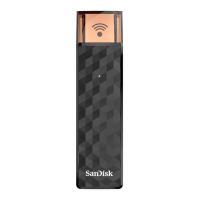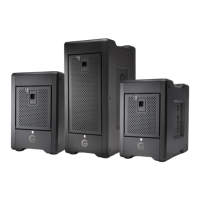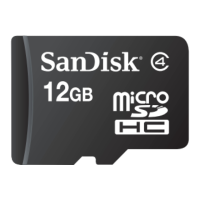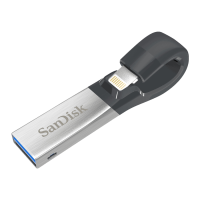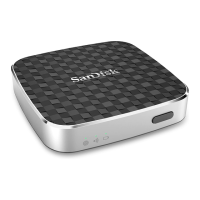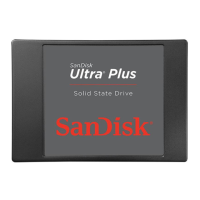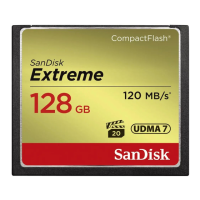Chapter 3 – SD Card Interface Description
Revision 2.2 SD Card Product Manual
© 2004 SanDisk Corporation 3-12 12/08/04
3.5.2 Card Identification Register
The Card Identification Register (CID)
12
is 16 bytes long and contains a unique card
identification number as shown in Table 3-10. It is programmed during card manufacturing
and cannot be changed by SD Card hosts.
Table 3-10 CID Register Definitions
Name Type Width CID-Slice CID Value Comments
Manufacturer ID (MID) Binary 8 [127:120] 0x03 Manufacturer IDs are
controlled and
assigned by the SD
Card Association
OEM/Application ID (OID) ASCII 16 [119:104] SD ASCII Code
0x53, 0x44
Identifies the card
OEM and/or the card
contents. The OID is
assigned by the
3C.
13
Product Name (PNM) ASCII 40 [103:64] SD02G
SD01G
SD512
SD256
SD128
SD64
SD32
SD16
Five ASCII
characters long
Product Revision
14
BCD 8 [63:56] Product
Revision xx
Two binary-coded
decimal di
its
Serial Number (PSN) Binary 32 [55:24] Product Serial
Number
32-bit unsigned
integer
Reserved --- 4 [23:20] --- ---
Manufacture Date Code
(MDT)
BCD 12 [19:8] Manufacture
date (for ex.
April 2001=
0x014)
Manufacturing
date—yym (offset
from 2000)
CRC7 checksum (CRC) Binary 7 [7:1] CRC7* Calculated
Not used, always “1” --- 1 [0.0] --- ---
*The CRC checksum is computed by using the following formula:
CRC Calculation: G(x)=x
7+3+1
M(x)=(MID-MSB)*x
119
+…+(CIN-LSB)*x
0
CRC[6…0]=Remainder[(M(x)*x
7
)/G(x)]
12
The CID Register in the SD Card has a different structure than in the MultiMediaCard.
13
3C represents the three SDA founding companies: Toshiba, SanDisk, and MEI.
14
The product revision is composed of two binary-coded decimal (BCD) digits (4 bits ea.) representing and “n.m”
revision number. The “n” is the most significant nibble and the “m” is the least significant nibble. Example: the
PRV binary value filed for product revision (6.2) would be “01100010”.
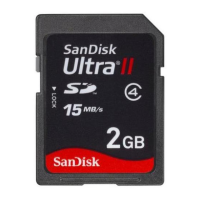
